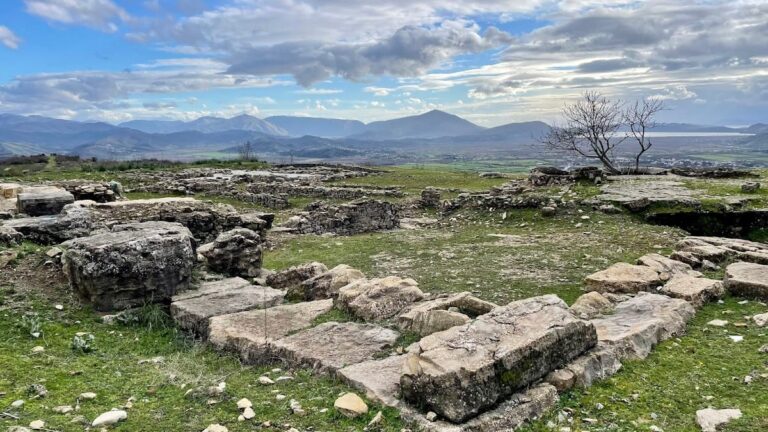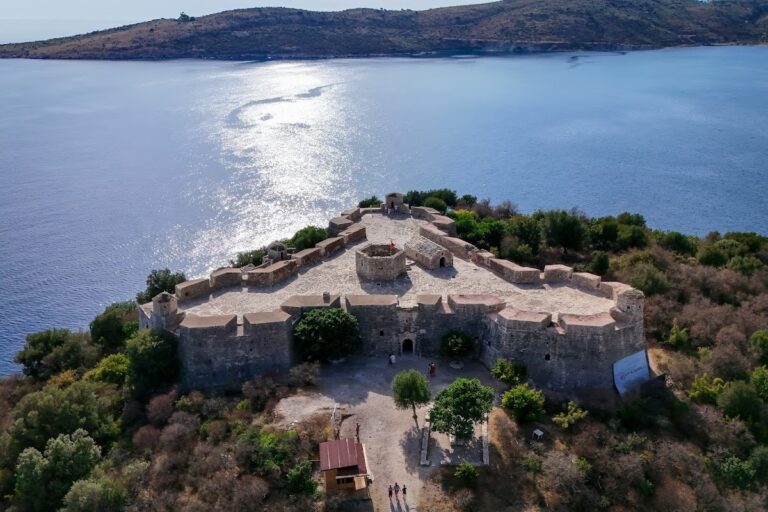Kassiopi Castle: A Byzantine and Venetian Fortress in Corfu, Greece
Visitor Information
Google Rating: 4.2
Popularity: Medium
Google Maps: View on Google Maps
Country: Greece
Civilization: Unclassified
Remains: Military
History
Kassiopi Castle is situated in the municipality of Kassiopi in Greece and was originally constructed during the Byzantine era. Serving as one of three key fortifications on Corfu, it played a vital role in the island’s defense before Venetian control.
Evidence from coins and pottery indicates that a fortress stood at Kassiopi as early as the 6th century AD, built during the Byzantine period. This early presence suggests the site had significant importance in the region’s efforts to control maritime routes and coastal security. Over the centuries, the castle was embroiled in the conflicts that shaped medieval Greece. In 1081, the Normans under Count Bohemund of Taranto captured it during their initial invasion of Greece, only for Byzantine Emperor Alexios I Komnenos to reclaim it three years later through a series of naval battles.
Control of the castle shifted again in 1267 when the Angevins seized it. Eventually, the Venetians took possession in 1386 after a brief resistance by the defenders. Unlike other Corfiot fortresses that the Venetians reinforced, the Venetians ordered the partial dismantling of Kassiopi Castle soon after their conquest, fearing it might be used against them either by enemies or restive local populations. Stones from Kassiopi were repurposed for repairing Corfu’s main fortress during the first half of the 16th century, under the direction of architects Michele Sanmicheli and his son Giangerolamo.
Despite a recommendation in 1671 by Venetian officials to strengthen Kassiopi Castle as a defense against an anticipated Ottoman attack, these plans were abandoned. After an Ottoman siege of Corfu in 1716, Venetian authorities opted for partial restoration of the castle. By this time, most residents had relocated to surrounding mountain villages, including settlements on Mount Pantokrator, signaling a decline in the castle’s immediate strategic or residential importance.
Around a century following the castle’s decline, local folklore began to flourish. Stories emerged of dragons breathing fire and destroying the castle while poisoning the nearby villagers. These tales likely arose from the local community’s unfamiliarity with the sounds and effects of gunpowder explosions, which had become a common feature in warfare but were mysterious to the early modern inhabitants.
Remains
The remains of Kassiopi Castle form an extensive quadrilateral enclosure measuring roughly 1.07 kilometers around, enclosing an area of some 35,000 square meters now overgrown with olive trees. The castle’s defensive walls feature 19 towers arranged in an alternating pattern of circular and rectangular shapes, aligned from southwest to northeast. These towers provided vantage points for defense and observation.
At the main entrance, a gate remains well preserved, flanked by two sturdy two-story towers. The entrance is approached by a steep path designed to slow down attackers, with extended protective walls shielding the gate itself to prevent surprise attacks from nearby hiding spots. The walls at the gate are nearly 2 meters thick, emphasizing the importance placed on this access point. Remnants of a forewall in front of the gate suggest that a large iron gate once secured the entrance. Both towers adjacent to the gate likely housed mechanisms—such as winches or pulleys—to raise and lower this iron barrier.
The castle’s defensive strategy relied heavily on battlements—protective parapets where archers and soldiers could position themselves during a siege. While no parts of these battlements survive today, historical artwork suggests they may have featured an M-shaped design, though the exact form remains unknown due to lack of physical evidence.
Most of the castle walls rise vertically, designed to resist attacks from siege engines common before the widespread use of artillery, such as ladders and battering rams. The older rectangular towers reflect earlier construction techniques, while the circular towers demonstrate later adaptations in defensive design. The cylindrical tower style was apparently introduced later, possibly due to the castle’s remote and provincial location, which slowed architectural innovations.
The eastern portion of the walls has largely disappeared, with stones having been removed and incorporated into local houses. Access to the site today is mainly from a narrow path on the southeast side, weaving through the village’s modern residential areas, reflecting how the castle lies within the center of the current settlement.
Long-term abandonment left Kassiopi Castle in a ruined state, although partial restoration efforts funded by the European Union have helped stabilize some of the remaining structures. The site thus preserves important archaeological evidence of Byzantine and Venetian military architecture while bearing traces of its layered historical use and transformation.










